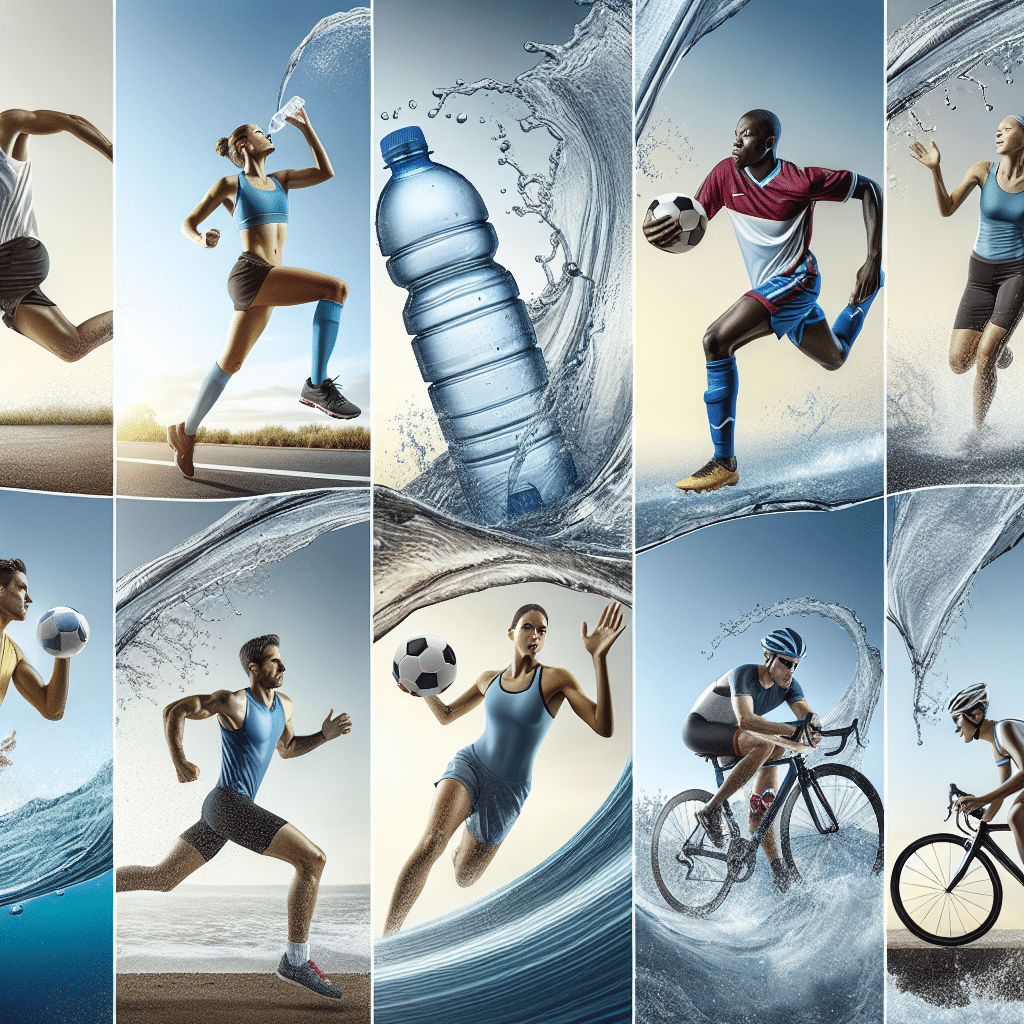Understanding Hydration for Athletes
Athletes often push their bodies to the limit, and staying hydrated is crucial for optimal performance. Hydration plays a vital role in regulating body temperature, maintaining joint lubrication, and ensuring that muscles function effectively. A lack of hydration can lead to fatigue, decreased endurance, and even severe health risks. Thus, implementing a DIY hydration challenge can motivate athletes to stay on top of their hydration needs.
Benefits of Hydration Challenges
-
Enhances Performance: Proper hydration can lead to improved athletic performance. Staying optimally hydrated allows for better oxygen delivery to muscles, aiding in stamina and endurance.
-
Encourages Team Spirit: When athletes participate in hydration challenges as a group, it fosters camaraderie and teamwork, enhancing interpersonal relationships within the team.
-
Promotes Awareness: A hydration challenge increases awareness about the importance of fluid intake, helping athletes form better habits regarding hydration.
-
Customization: DIY challenges can be tailored to individual or team needs, accommodating different sports and hydration requirements.
Setting Up a DIY Hydration Challenge
Define the Challenge Period: Choose a timeframe for the challenge, typically ranging from one week to one month. A longer duration allows habits to solidify.
Set Clear Goals: Establish measurable goals, such as specific fluid intake amounts (e.g., 3 liters per day) or completion rates for hydration logs.
Create a Tracking System: Use a digital application, such as MyFitnessPal or a simple spreadsheet, to track daily water consumption. Integrate social media to share progress and foster accountability.
Motivation and Incentives: Offer daily or weekly rewards for milestone achievements to keep participants engaged. Rewards can range from hydration gear to vouchers for sports stores.
Engaging Activities to Promote Hydration
Daily Hydration Logs: Encourage participants to maintain a daily log of their water intake. Make it fun with creative strategies, including doodling or using water-themed stickers.
Hydration Wall Chart: Create a visual hydration chart displayed prominently in the training area where athletes can mark their progress. Use colors to signify different hydration levels.
Buddy System: Pair participants to encourage mutual motivation. They can check in on each other’s progress and share tips on how to stay hydrated.
Themed Water Days: Alternatively, set various themes for each day or week of the challenge. For example, “Fruit-Infused Water Day” where athletes create and share recipes for hydration-enhancing recipes.
Types of Hydration Challenge Activities
-
Water Bottle Challenge: Athletes must utilize a specific water bottle (with a marked measurement) ensuring they consume the entire bottle a set number of times per day.
-
Hydration Quizzes: Create fun quizzes centered around hydration facts, benefits, and myths. These quizzes can stimulate interest and keep the participants informed.
-
Virtual Fitness and Hydration Workshop: Host webinars with nutritionists on hydration importance, along with interactive Q&A sessions.
-
Recipe Sharing Contests: Encourage participants to share homemade electrolyte drink recipes. The best recipe can include special ingredients such as honey, lemon, or coconut water.
Tips for Staying Hydrated
-
Use Reminders: Set alarms or download hydration reminder apps to receive notifications prompting water breaks.
-
Flavor Enhancements: To prevent boredom, add natural flavorings such as lemon, mint, or cucumber to water.
-
Monitor Urine Color: Teach athletes to check their urine color as a hydration gauge; pale yellow generally indicates proper hydration.
-
Snack Wisely: Incorporate hydrating foods like cucumbers, watermelon, and oranges in snacks, adding to overall fluid intake.
Rewarding Experiences
Tangible rewards can significantly boost engagement in a hydration challenge. Consider the following:
-
Trendy Hydration Gear: Offer branded water bottles, hydration packs, or sports towels as prizes for achieving goals.
-
Public Recognition: Announce participants’ achievements in team meetings or social media platforms to foster a competitive spirit and healthy motivation.
-
Access to Workshops: Winners can gain access to specialized workshops centered around nutrition and athlete performance, enhancing their overall training experience.
Potential Challenges and Solutions
-
Resistance to Change: Some athletes may resist altering their hydration habits. To address this, emphasize the performance benefits and include peer pressure elements through team goals.
-
Forgetfulness: For athletes juggling busy schedules, the allocation of specific hydration times during training sessions can mitigate forgetfulness.
-
Boredom with Water: Offer alternatives such as herbal teas, caffeine-free beverages, or homemade smoothies as hydration options.
Technology Integration
Incorporate technology to provide a seamless hydration challenge experience. Wearables like fitness trackers can measure water consumption and prompt reminders. Application integrations can also facilitate real-time tracking and share individual progress on social platforms, enhancing accountability.
Social Media Engagement
Utilize platforms like Instagram or Facebook to share updates, photos of hydration efforts, and milestones. Creating a unique hashtag (e.g., #HydrationHeroes) can further inspire participants to share their journey and motivate others.
Conclusion
Through the implementation of DIY hydration challenges, athletes can significantly improve their hydration habits. Engaging activities, clear goals, and healthy competition can establish a culture of effective hydration within teams. By prioritizing hydration, athletes will not only enhance their overall performance but also enjoy a fulfilling experience together. Establishing a fun, competitive environment encourages long-lasting hydration habits that can lead to better performance both on and off the field.
